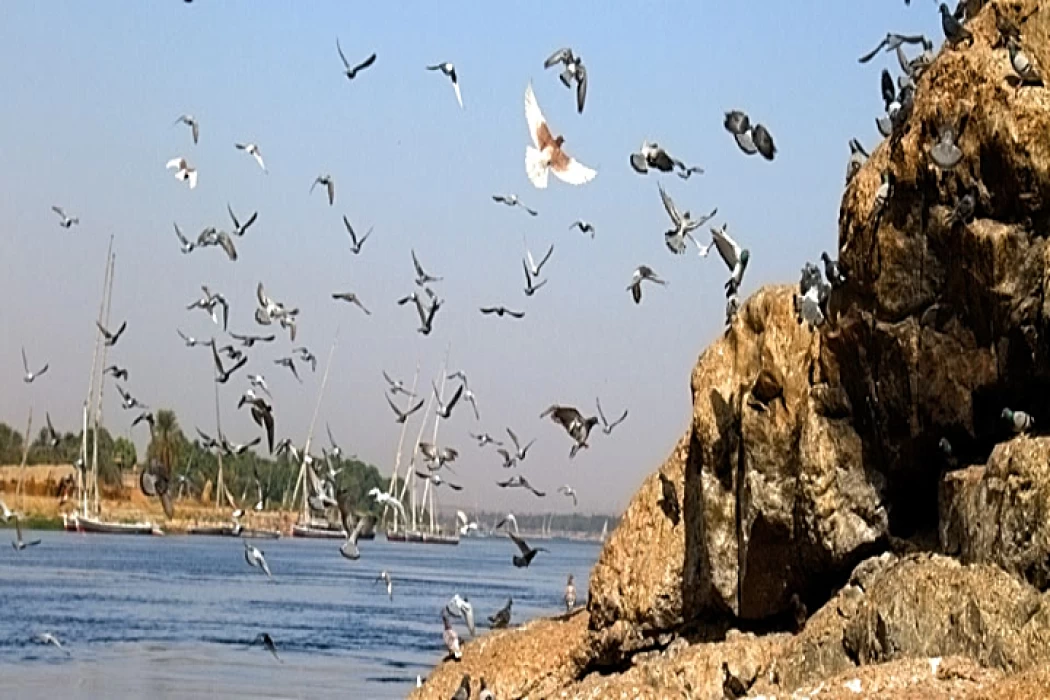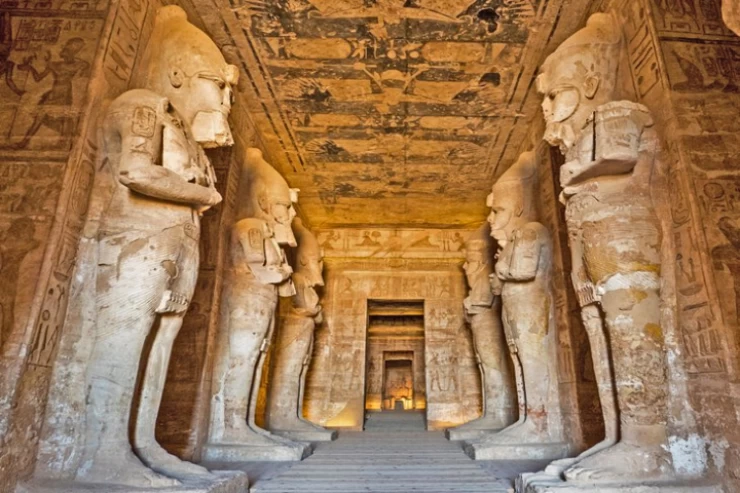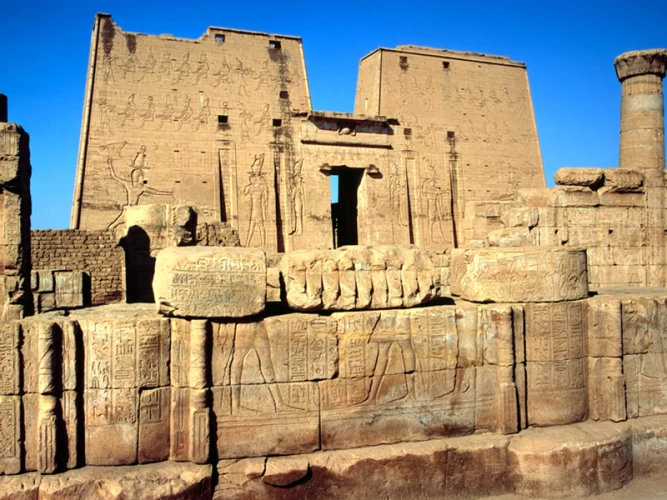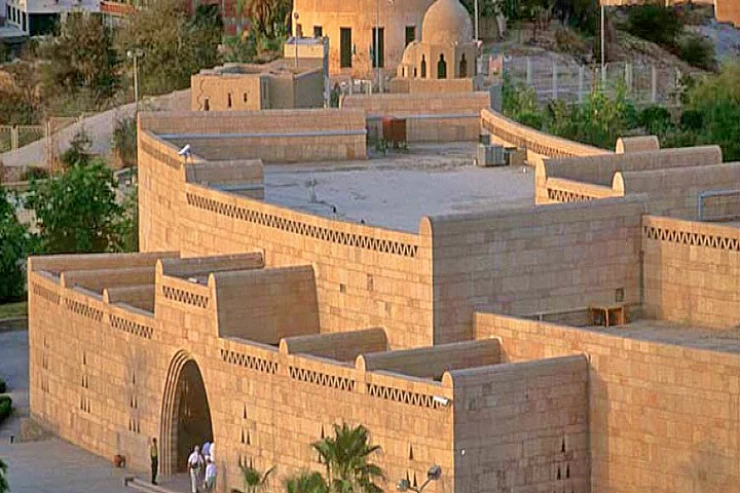
Tourism in Aswan | Aswan Tourism in Egypt
Tourism in Egypt
Located on the banks of the Nile River, southern Egypt's city of Aswan is characterized by culture, history, and nature. Known for its sunny climate and prehistoric archaeological sites, Aswan has grown to become a popular destination for tourists who want an authentic Egyptian experience. This complete travel guide has you covered on everything you may wish to know to plan your ideal trip to Aswan, from the best time to visit to the top sights, tips and tricks, bucket list things to do, and travel tips. With information on how to stay, getting around, food, and so much more, use this Aswan travel guide to make the most of your trip to this wonderful city.
Best time to visit Aswan
The best time to travel to Aswan is during the cooler winter months from November to March. This is when the daytime temperatures are warm but pleasant, ranging from the mid-20s to low 30s Celsius. The weather is sunny and usually rain-free.
While the winter season is more appealing to travelers, the summer crowds are still easy to handle compared to the scorching summer seasons. Shoulder seasons of April/May and September/October are also ideal times to visit. The weather is a little warmer, but you will avoid the lowest temperatures, enjoy smaller crowds, and lower accommodation charges.
A selection of prime tourist attractions located in Aswan
Philae Temple
There are several Ptolemaic period (332-30 BC) buildings of antiquity in Philae, including the temple begun by Ptolemy II Philadelphus (285-246 BC) and dedicated to Isis, the mother of Horus, queen of royalty. Also included is a scene inside the mamizi or birth chamber in which Horus's birthday was celebrated and showing Isis breastfeeding Horus in the bush.
Temple of Isis is one of the oldest Egyptian ancient temples; the temple remained operational until the Byzantine King Justinian I (527-565 AD), when all the pagan temples were ordered to be closed, where a priest wrote the last fourth-century AD (394 AD) hieroglyphic text on one of the columns by Ismet-Akhom. The temple had been turned into a church and the temple inscriptions defaced.
Behind the Temple of Isis is a temple for Hathor built by Ptolemy VI Philomator (180-145 BC) and Augustus, the first Emperor of Rome (30 BC-14 AD). The palace of Trajan (98-117 AD) in front of the Temple of Philae still stands although the roof has disappeared, and the symmetrical arrangement of its magnificent columns impressed travelers, who photographed and recorded it. Isis was the supreme goddess of the region, and the emperor is depicted offering sacrifices to her, her husband Osiris, and son Horus.
All of these objects were moved from the original island of Philae to the nearby island of Agilkia by the UNESCO Nubia campaign of the 1960s in order to save the sites that were flooded in building the Aswan High Dam.
The high dam
The High Dam is a total of 3,830 meters in length, 520 meters of which is between the two banks of the Nile and the rest extending in two wings on both sides of the river. It is 111 meters high above the bed of the Nile River, and its top width is 40 meters. The power plant is located on the eastern bank of the Nile, crossing the course of the diversion channel, where water is sucked into the turbines through six tunnels equipped with water control gates and grass screens. The power plant produces electricity of 10 billion kilowatt-hours yearly.
Kom Ombo Temple
The name of the site comes from the Arabic word "Kom," a popular name for most of the archaeological sites, and "Embu" from the ancient Egyptian language 'Nupt,' gold, and the name of the place as a whole means "golden (city)."
The city temple is dedicated to two gods: Sobek, the crocodile god, and Horus, the falcon-headed (Horus the Elder). Although there was already an earlier temple here in the New Kingdom (ca. 1550-1069 BC), the current temple building was built in the Greco-Roman era (332 BC-395 AD), with the earliest known royal name being Ptolemy VI (180-145 BC). Ptolemy XII (80-51 BC) completed most of the temple decoration.
The temple is uniquely designed. Because it is consecrated to two idols, it has two parallel axial corridors inside its columned halls, terminating in two compartments; the southern axis (right) is consecrated to Sobek, and the northern axis (left) is for Hor-war.
Aswan Museum
It is located on the eastern side of Elephantine Island. It is an island full of important monuments, like the temples built for the island god. Aswan Museum was inaugurated on Elephantine Island in 1898 AD as a rest house for the English irrigation engineer (William Wilcox), the designer of the Aswan Reservoir. This building was converted into a museum in 1912 AD after the Aswan Reservoir project was completed. Therefore, it is among the oldest regional museums in Egypt, and the museum stands out through a special setting—as it lies in an archaeological site and encircled by a group of temples (the temple of god Khnum, the temple of goddess Satet, the temple of goddess Satet, the temple of really Epp, the Nile scale, the centre of Aswan Island, and Aswan Museum)—is sectioned according to historical periods and comprises antiquities found in the Aswan region and Elephantine Island dating from the prehistoric period as well as earlier than the Pharaonic and Roman Ptolemaic period and even the Coptic and Islamic period. The museum consists of a ground floor and a basement, and the museum building has a balcony above the museum garden and the Nile across from the city of Aswan, and the museum roof is Jamalonian style with tiles to reflect the heat of the air, and the museum is made of grey and pink granite stone, and the museum's back is made of sandstone, and the museum ground floor
It contains a reception hall and a series of four halls (2 on the right side of the entrance and 2 on the left side of the entrance), then a circular corridor on which there are two halls opening, one of which is to showcase mummies and coffins, and a staircase to the museum basement, in which there are five rooms serving as antiquities stores which open onto a large central hall topped by a skylight roofed from above with iron bars and reinforced glass.
Aswan is the land of gold, the land of good people. On its land, there are many different civilizations and cultures, and its warm, stable weather is unparalleled in the winter. With all these elements and others, Aswan has become a tourist destination that attracts the attention of the world.
Enjoy a wonderful vacation in the far south of Egypt, where these places vary between cultural, historical, and recreational.
Aswan is one of the beautiful and peaceful destinations in Egypt and lies farthest in the south of the country on the River Nile. With dramatic scenic beauty, ancient history, and an actively living Nubian culture, it is the kind of retreat no traveler ever forgets.
History
Pharaonic Egypt
The importance of this region emerged during the Old Kingdom, securing the southern border. It served as a center for armies when the kings of the Middle Kingdom attempted to extend their power southward. It was particularly important in the Egyptian war to drive out the Hyksos.
Ptolemaic Egypt
During the Ptolemaic era, the island of Philae—the seat of worship of the goddess Isis—received much attention, and they completed its great temple.
Roman Egypt
During the Roman era, temples were built in the ancient Egyptian style to attract the Egyptians. Emperor Trajan built a small temple on Philae Island.
With the spread of Christianity, it became the official religion in the fifth century AD, and Egyptian temples were transformed into churches.
The Islamic Era
Islam then spread from its inception; evidence written in Kufic script dating back to the early first century AH has been found.
Aswan flourished during the Islamic era, becoming a route to Azab on the Red Sea coast in the 10th century AD, from where ships sailed to the Hijaz, Yemen, and India.
During the sixth and seventh centuries AH, it was a significant cultural hub with three schools, the oldest of which were the Aswan School, Saifiya School, and Najmiya School in Aswan.
Modern Era
Muhammad Ali established the first military school in Egypt there in 1837.
Aswan is a gateway to the most famous historical sites of Egypt. Among its prime sites is the Philae Temple, which honored goddess Isis. The temple rests on an island with the Nile in the background. However, the historical value of the temple pales in front of its scenic beauty. The glory of the temple and its legends are rekindled during the Sound and Light Show at nightfall.
The Unfinished Obelisk, another interesting site, gives credit to the awe-inspiring stone craftsmanship of the ancient Egyptians. To the north lies the Temple of Kom Ombo, a unique temple dedicated to the two gods, Sobek and Horus. Abu Simbel's stunning temples are a must-have for any visit to Aswan. These colossal monuments carved right into the mountains speak for the architectural genius of Ramesses II and stand as a testament to his reign.
In the charming south, the river differs in form and subject from its nature in any other governorate in terms of purity and color, which, along with the color of the sky, form an artistic painting created by the Creator. Therefore, the Nile in the south forces you to visit it more than once.
The Nile takes on a peaceful beauty in Aswan. A ride on a felucca on its calm waters is one of the most suitable means of taking in the natural beauty of the location, especially when the sun sets into the riverbanks.
There are contemporary marvels that add to Aswan's beauty. The Aswan High Dam is an engineering marvel that not only controls the Nile waters but also created Lake Nasser, one of the world's largest artificial lakes. You can visit lesser-known gems from here like the Kalabsha Temple, hidden by the lake shores.
In Nubia, you'll find all the comforts, tranquility, and clear weather, making it an unparalleled eco-tourism destination in the far south of Egypt. As you set foot in Nubia and its villages, you'll find Nubian houses designed in the shape of domes, in cheerful colors, overlooking the Nile... You'll find women wearing the traditional Nubian gergar, and the markets are filled with handcrafted products and eco-friendly items, just as their fathers and grandfathers did.
Some of the murals tell the story of the amazing generosity and hospitality of the Nubian people, and their refined treatment of foreigners visiting their country. Enjoy the picturesque environment in the villages overlooking the Nile River, and spend a pleasant time surrounded by pure and attractive nature, generous hospitality, and the preparation of distinctive drinks and foods unique to the Nubian people, inherited from their fathers and grandfathers.
Aswan is Nubia's cultural capital, a city that is steeped in history and tradition. You should go to a Nubian village, where you can feel the hospitality of the people, the colorfulness of their houses, and their rich heritage. Taste traditional Nubian food, hear their distinct music, and see handmade handicrafts that narrate their history. It's something that stays with you.
One of Aswan's oldest marketplaces, the old tourist market is becoming more well-known and respected over time.
It's the biggest, busiest, and most dynamic commercial market. Aswan is full of tourist and natural attractions and tourist attractions, most notably the Tourist Market Street, which includes a large number of bazaars and markets specialized in selling gifts and souvenirs that carry the traditional style of the people of Aswan, in addition to handmade products such as accessories, porcelain, and clothes, as well as leather products and antiques, and selling local products such as clothes, handicrafts, ceramic utensils, gifts and souvenirs. There are also a lot of eateries on Aswan's Tourist Market Street. This is on top of leather goods, textiles, and fragrance items.
Aswan Market is a vibrant destination where the scent of spices fills the air and the eyes are treated to local handicrafts. Explore the souk to find treasures like handcrafted jewelry, colorful Nubian fabrics, and scented hibiscus tea—a local favorite and wonderful souvenir.


















